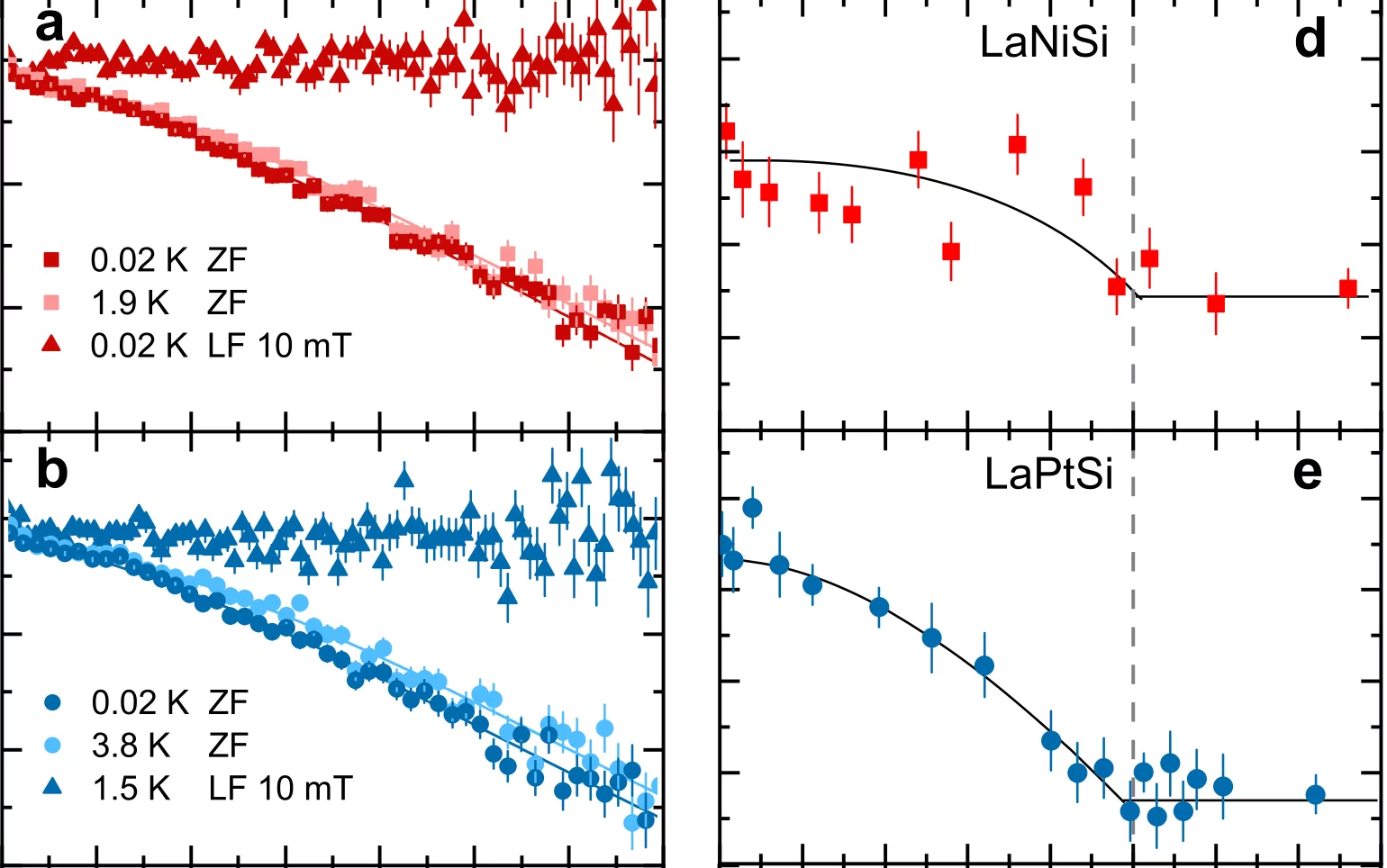Topological semimetals are three dimensional materials with symmetry-protected massless bulk excitations. As a special case, Weyl nodal-line semimetals are realized in materials having either no inversion or broken time-reversal symmetry and feature bulk nodal lines. The 111-family, including LaNiSi, LaPtSi and LaPtGe materials (all lacking inversion symmetry), belongs to this class. Here, by combining muon-spin rotation and relaxation with thermodynamic measurements, we find that these materials exhibit a fully- gapped superconducting ground state, while spontaneously breaking time-reversal symmetry at the superconducting transition. Since time-reversal symmetry is essential for protecting the normal-state topology, its breaking upon entering the superconducting state should remarkably result in a topological phase transition. By developing a minimal model for the normal-state band structure and assuming a purely spin-triplet pairing, we show that the superconducting properties across this family can be described accurately. Our results demonstrate that the 111 materials reported here provide an ideal test-bed for investigating the rich interplay between the exotic properties of Weyl nodal-line fermions and unconventional superconductivity.
Facility: SμS
Reference: T. Shang et al, npj Quantum Materials 7, 35 (2022)
Read full article: here



